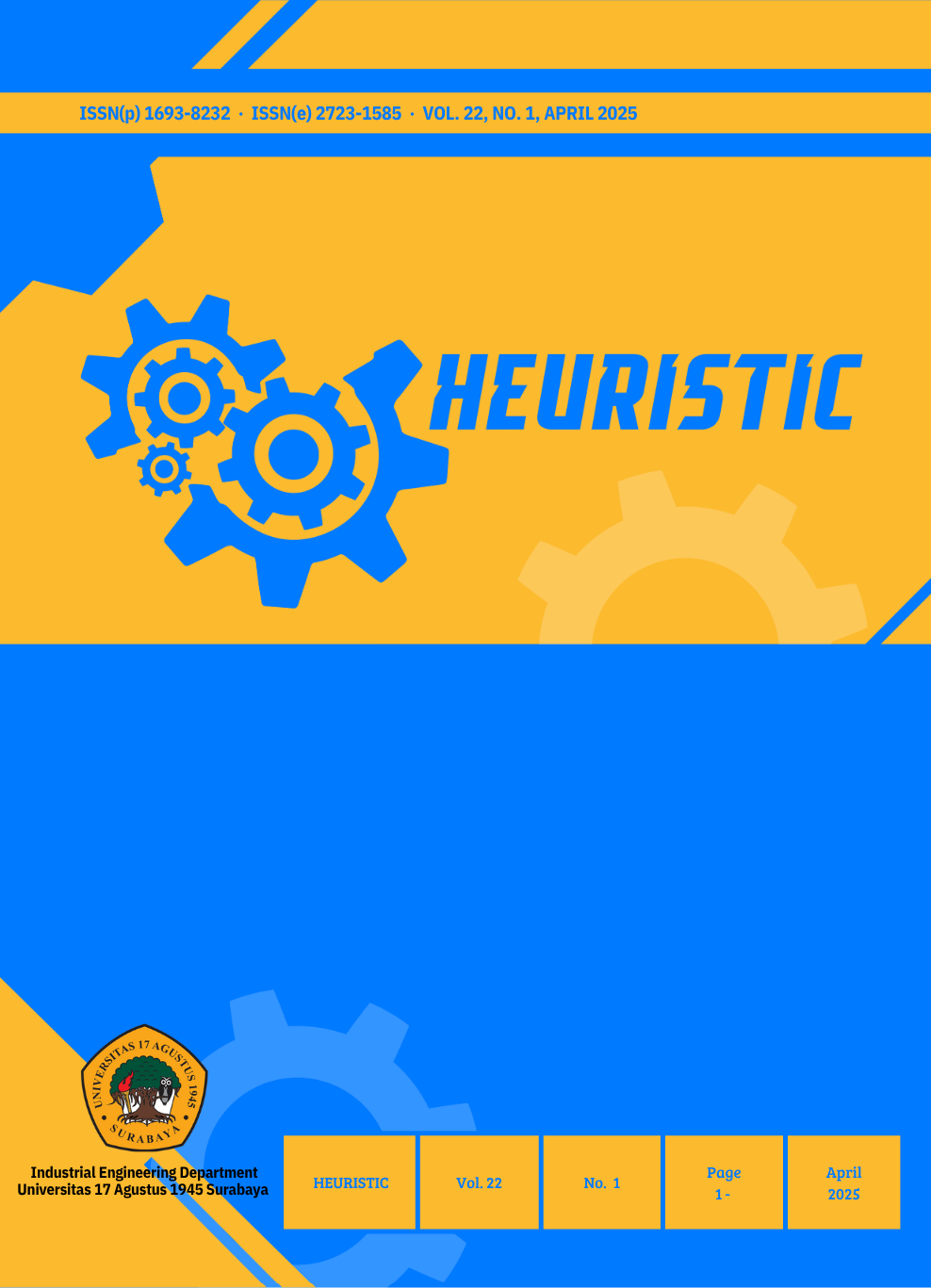Evaluation of Customer Satisfaction Level At PT. X Using Net Promoter Score Approach
Abstract
Customer satisfaction plays an important role in today's competitive business era, where a deep understanding of customer satisfaction provides valuable information for business development. A deep understanding of how satisfied customers are with the services provided is a strategic aspect that allows companies to adapt and grow. In this study, PT. X was chosen as the subject of the case study because of its strong reputation in the travel industry. This study aims to evaluate the level of customer satisfaction at PT. X using one of the methods to measure customer satisfaction, namely the Net Promoter Score (NPS) method. The Net Promoter Score method is a relevant tool in measuring variables related to customer satisfaction. The results of data analysis from five questions in the questionnaire showed an average NPS score of 58.3 which reflects a high level of customer satisfaction. Therefore, PT. X can continue to focus on services to improve customer satisfaction sustainably. The increase in customers who are included in the passive and detractor categories is also a potential focus for further development. The conclusion of this study is expected to provide valuable knowledge for companies in their efforts to improve customer satisfaction through an effective and measurable approach.Downloads
References
R. K. Khayru, “Opinions about Consumer Behavior during the Covid-19 Pandemic,” J. Soc. Sci. Stud., vol. 1, no. 1, pp. 31–36, 2021.
M. A. Fared, D. Darmawan, and M. Khairi, “Contribution of E-Service Quality to Repurchase Intention with Mediation of Customer Satisfaction: Study of Online Shopping Through Marketplace,” J. Mark. Bus. Res., vol. 1, no. 2, pp. 93–106, 2021.
M. Munir and A. R. Putra, “The Influence of Brand Image and Product Quality of Samsung Brand Washing Machine on Brand Loyalty,” J. Mark. Bus. Res., vol. 1, no. 2, pp. 83–92, 2021.
H. S. N. Halizah et al., “Determinants of Customer Trust: A Study on Safety, Ease-of-use, and Perceived usefulness of Herbal Products of Kuku Bima Ener-G,” J. Trends Econ. Account. Res., vol. 2, no. 4, pp. 86–92, 2022.
J. R. Jahnert and H. Schmeiser, “The relationship between Net Promoter Score and insurers’ profitability: An empirical analysis at the customer level,” Geneva Pap. Risk Insur. Issues Pract., 2021. doi: 10.1057/s41288-021-00237-3.
G. Wu, L. Liang, and D. Gursoy, “Effects of the new COVID-19 normal on customer satisfaction: Can facemasks level off the playing field between average-looking and attractive-looking employees?” Int. J. Hosp. Manag., vol. 97, p. 102996, 2021.
M. Brugarolas et al., “Innovation strategies of the Spanish agri-food sector in response to the black swan COVID-19 pandemic,” Foods, vol. 9, p. 1821, 2020.
V. Luoma-aho, M. J. Canel, and J. Hakola, “Public sector reputation and Net Promoter Score,” Int. Rev. Public Nonprofit Mark., vol. 18, no. 3, pp. 419–446, 2021. doi: 10.1007/s12208-021-00280-9.
A. Baquero, “Net Promoter Score (NPS) and Customer Satisfaction: Relationship and Efficient Management,” Sustainability, vol. 14, pp. 1–19, 2022.
Safitri et al., “Klasifikasi Kepuasan Pelanggan Menggunakan Metode Classification and Regression Tree (CART),” J. Sains Komput. Inform., vol. 5, no. 1, pp. 337–349, 2021.
R. Kriswibowo, R. W. F. Rusina, and J. S. P. Johan, “Tingkat Kebergunaan Aplikasi Peduli Lindungi Mobile Menggunakan Metode Sistem Usability Scale dan Net Promoter Score,” Decode: J. Pendidik. Teknol. Inf., vol. 3, no. 2, pp. 54–62, 2023.
A. A. Allam et al., “Citizens Satisfaction with E-Government Mobile Services and M-Health Application during the COVID-19 Pandemic in Al-Madinah Region,” J. Serv. Sci. Manag., vol. 14, no. 6, pp. 636–650, 2021.
K. Nanath and L. Oney, “An investigation of crowdsourcing methods in enhancing the machine learning approach for detecting online recruitment fraud,” Int. J. Inf. Manag. Data Insights, vol. 3, no. 1, p. 100167, 2023.
S. Baehre et al., “The use of Net Promoter Score (NPS) to predict sales growth: Insights from an empirical investigation,” J. Acad. Mark. Sci., vol. 50, no. 1, pp. 67–84, 2022.
E. M. Picou, “Hearing Aid Benefit and Satisfaction Results from the MarkeTrak 2022 Survey: Importance of Features and Hearing Care Professionals,” Semin. Hear., vol. 43, no. 4, pp. 301–316, 2022.
N. L. L. Tarigan et al., “Analisis Tingkat Loyalitas Konsumen Generasi Z terhadap Marketplace di Indonesia Menggunakan Metode NPS (Net Promoter Score),” J. Mantra: Manaj. Strategis, vol. 1, no. 1, pp. 22–35, 2023.
M. R. W. Wardana, H. Angriani, and A. Muawwal, “Analisis Pelanggan Smart Catering Menggunakan Metode Net Promoter Score,” J. KHARISMA Tech, vol. 18, no. 1, pp. 151–164, 2023.
S. Mulyati, A. Bukhari, and I. A. P. Indy, “Analisis Kepuasan dan Loyalitas Konsumen terhadap Atribut Produk Sayuran Organik pada E-Commerce Kecipir,” J. Unpad: Prospek Agribisnis, vol. 2, pp. 107–118, 2023.
Authors who publish with Heuristic agree to the following terms:
- Authors transfer the copyright and grant the journal right of first publication with the work simultaneously licensed under a Creative Commons Attribution-ShareAlike 4.0 International License.. that allows others to share the work with an acknowledgement of the work's authorship and initial publication in this journal.
- Authors are able to enter into separate, additional contractual arrangements for the non-exclusive distribution of the journal's published version of the work (e.g., post it to an institutional repository or publish it in a book), with an acknowledgement of its initial publication in this journal.
- Authors are permitted and encouraged to post their work online (e.g., in institutional repositories or on their website) prior to and during the submission process, as it can lead to productive exchanges, as well as earlier and greater citation of published work (See The Effect of Open Access)







